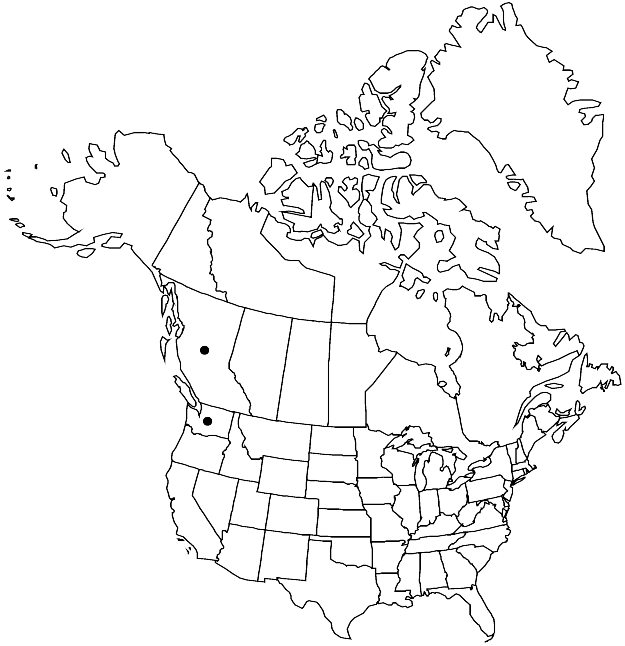Sandbergia whitedii
Leafl. Bot. Observ. Crit. 2: 137. 1911.
Perennials; densely and uniformly pubescent, trichomes shortly stalked, minute, Y-shaped or cruciform, mixed with simple or 1 or more ray-forked ones. Stems simple or few from caudex, erect, branched (several) distally, (1.5–) 2.5–5.5 (–6.5) dm, densely pubescent throughout. Basal leaves often rosulate; petiole (1–) 2–5 (–7) cm; blade spatulate to linear-oblanceolate, (1–) 1.7–5 cm × (3–) 4–9 (–12) mm, margins entire or dentate, surfaces densely pubescent. Cauline leaves 3–7 (widely spaced); blade linear-oblanceolate, 2–7 cm × 1–5 (–8) mm, margins usually entire, rarely minutely sparsely denticulate, apex obtuse, surfaces densely pubescent. Fruiting pedicels (5–) 8–14 (–17) mm, densely pubescent. Flowers: sepals 2.5–3 × 1–1.5 mm; petals (4–) 5–6.5 (–7.5) × (1.2–) 1.5–2 (–2.2) mm; filaments 1.5–3 mm; anthers oblong, 0.6–0.8 mm. Fruits suberect, (not appressed to rachis), straight, slightly torulose, subterete, (1–) 1.3–1.8 (–2) cm × 0.8–1 mm; valves each with obscure midvein on proximal 1/2, densely pubescent; ovules 20–30 per ovary; style 0.2–0.4 mm. Seeds 1–1.2 × 0.6–0.7 mm.
Phenology: Flowering Apr–Jul.
Habitat: Dry sagebrush scabland, gravelly hillsides, basaltic talus, dry sandy slopes, alpine meadows, cliffs, ridge crests
Elevation: 500-1200 m
Discussion
In Washington state, Sandbergia whitedii appears to be restricted to Chelan, Douglas, Grant, Kittitas, Lincoln, and Okanogan counties.
Selected References
None.
Lower Taxa
"elongated" is not a number."thick" is not a number."dm" is not declared as a valid unit of measurement for this property."dm" is not declared as a valid unit of measurement for this property.
